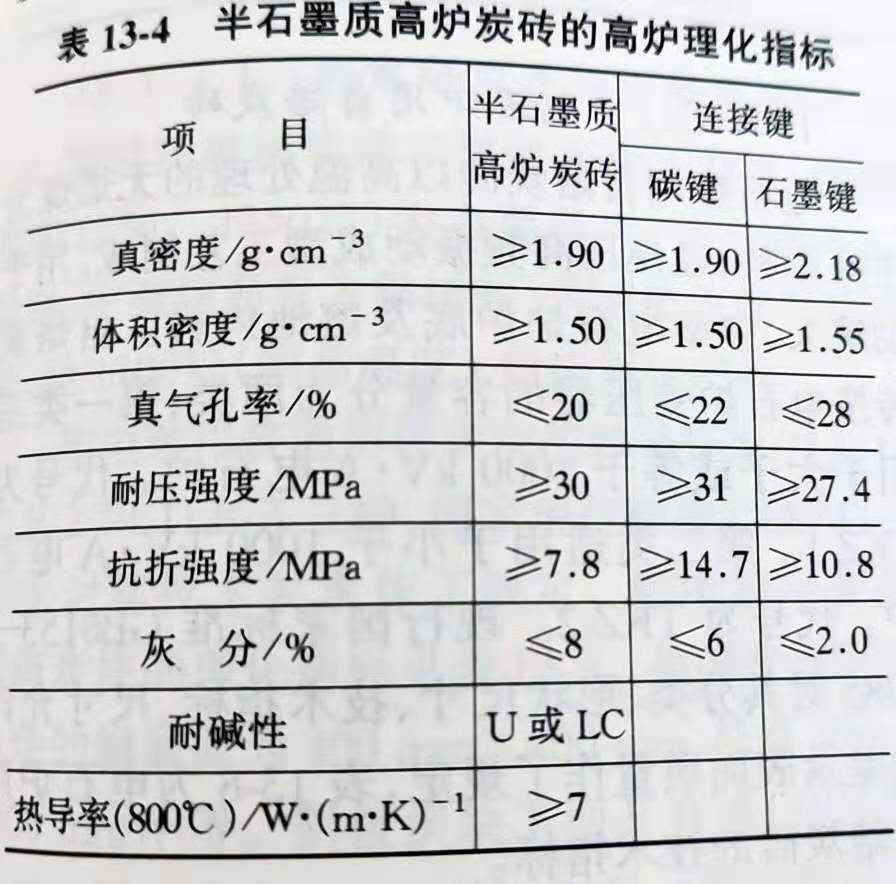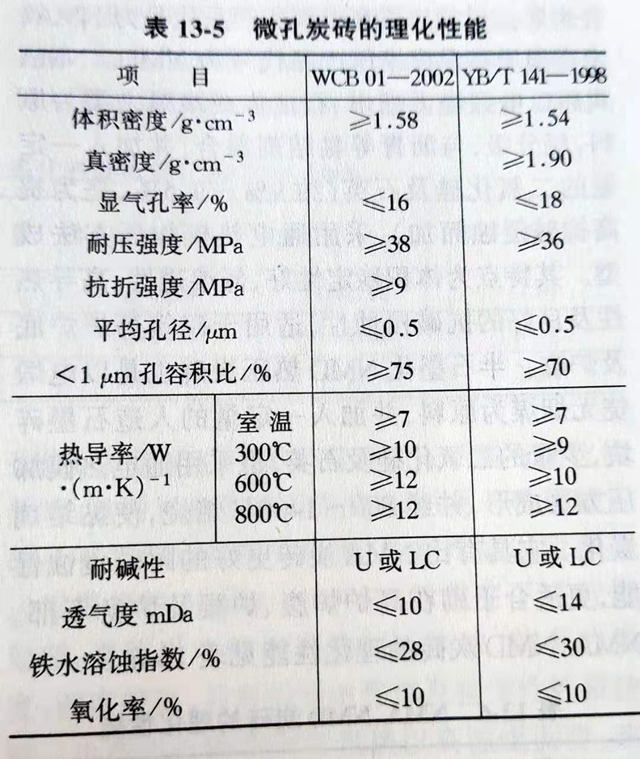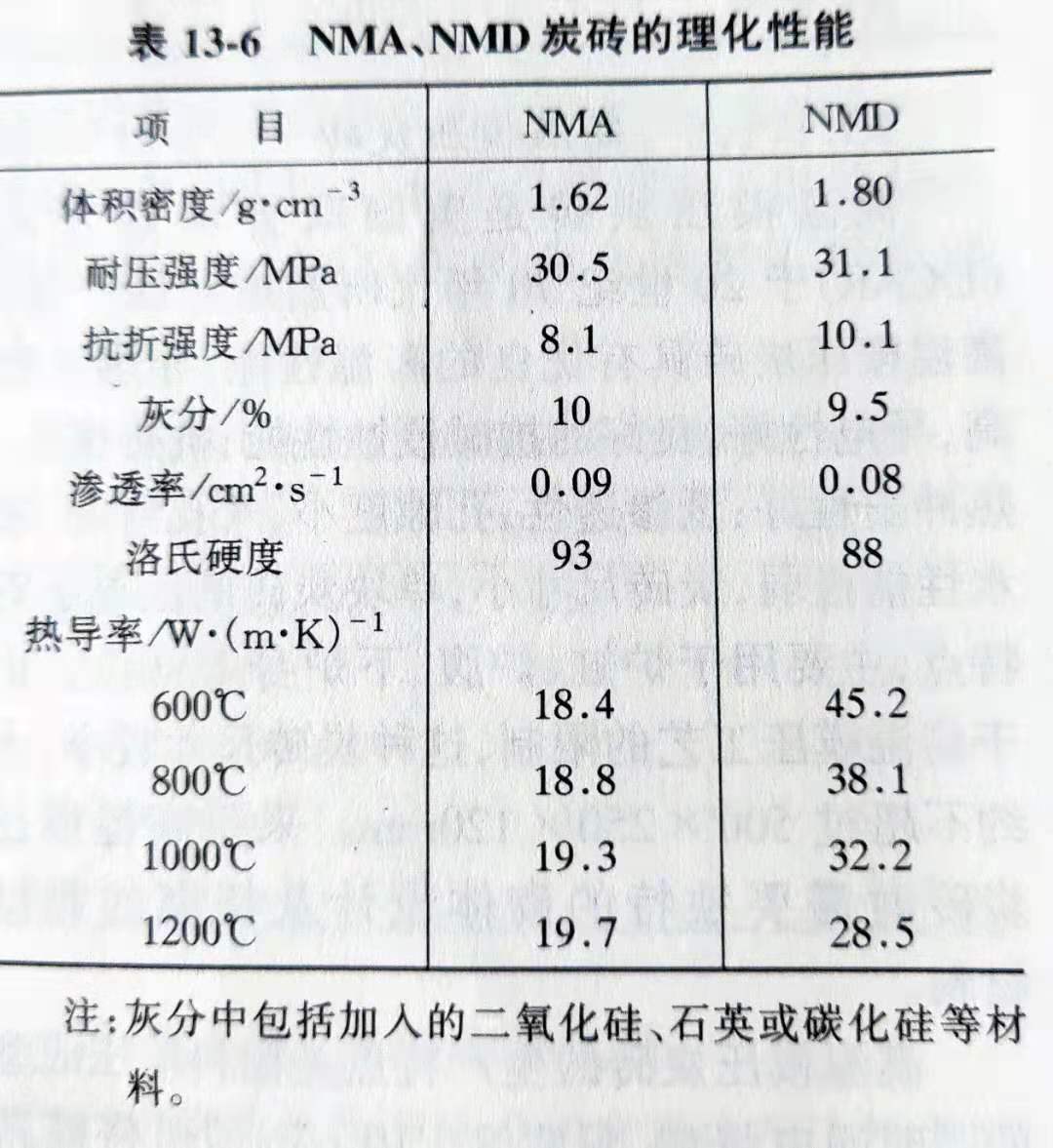Semi-graphite Carbon Brick
The main characteristics of semi-graphite carbon brick are that anthracite can be calcined at high temperature as raw material, and the temperature of electric calcination can reach 1500 ~ 2000 ℃, which makes anthracite enter a semi-graphitization state (the resistance is more than 50% lower than that of ordinary calcined anthracite). In production, half-graphite brick generally does not use metallurgical coke as powder, but uses ground graphite shredded (graphite electrode waste or machined cutting debris) as powder. The thermal conductivity of this kind of semi-graphite brick is obviously improved, and the corrosion resistance of alkali metal salt is much better than that of ordinary carbon brick, which tends to gradually replace ordinary carbon brick. Semi-ink blast furnace carbon brick used in masonry strengthening smelting high The bottom of the furnace, the upper part of the hearth. The physical and chemical indexes are stipulated in the current YB4037-1991 industry standard, which is shown in Table 13 ~4, and the allowable deviation of size and appearance quality are also stipulated.

Microporous carbon brick not only has excellent conventional properties, but also has excellent performance, including alkali resistance, thermal conductivity, resistance to molten iron corrosion, oxidation resistance and resistance to molten iron permeability, etc. At the same time, the permeability is low, the average pore size less than 1μm pore volume percentage is more than 70%. Mainly used in blast furnace hearth and bottom parts, can resist alkali erosion, resist hot metal penetration, can achieve ironmaking blast furnace high efficiency, energy saving, longevity.
The microporous carbon brick is made of anthracite as main raw material at high temperature (1500-2000 & deg; C), and a proper amount of natural graphite, aluminum oxide, pure silicon powder, silicon carbide and other materials are added, and the bonding agent is medium-temperature asphalt. The addition of pure silicon or silicon carbide can effectively reduce the pore size of the air hole, reduce the penetration of the molten iron and the slag, and improve the thermal conductivity and the oxidation resistance of the carbon block, and the addition of the aluminum oxide can increase the corrosion resistance of the alkali metal salt of the carbon block and can resist the corrosion of the molten iron. The production process of the microporous carbon brick is the same as that of the common carbon brick. Table 13-5 lists the physical and chemical properties of the microporous carbon brick specified in the YB/ T141-1998 standard, The physical and chemical properties of microporous carbon brick produced by a factory in China are also listed.

High temperature molded carbon brick is a product successfully developed by (UCAR) of United carbon Company in the 1970s. High temperature molded carbon brick has excellent high temperature properties, high thermal conductivity, good alkali erosion resistance, thermal shock resistance and thermal impact resistance. Low permeability, small porosity, closed porosity, very weak water absorption, small size of carbon brick, small temperature difference of single carbon brick and so on, mainly used in hearth, hearth, lower furnace body and so on. Due to the limitation of high temperature molding process, the size of this kind of carbon brick is small, which does not exceed 500 × 250 × 120 mm. Unique masonry is needed when high temperature molded carbon brick is used.
The production characteristic of high temperature molded carbon brick is that the paste is molded and roasted at the same time. Only 8~10min can heat the billet in the mould to 1000 ℃. The binder contained in the billet can be carbonized directly in a very short period of time, and then the roasted blank will be finished after surface processing, thus eliminating the traditional long time roasting process. This kind of sharp heating under certain pressure not only increases the coking rate of the binder. The volume density and thermal conductivity are increased, and the open porosity is reduced, and the permeability is greatly reduced. Compared with the traditional large carbon block, the permeability is reduced by 100 times, and the high temperature molded carbon brick is reduced. It is almost impermeable material, so hot metal and slag are extremely difficult to enter the carbon brick.
The high temperature molded carbon brick is carbon and semi-graphite. The carbon high temperature molding product code of United carbon Company is NMA, semi-graphite high temperature molded product code NMD.NMA carbon brick, which is made of electric calcined anthracite, petroleum coke or carbon black as raw materials, graded, mixed with asphalt and other bonding agents, and added a certain amount of silica and quartz (about 9% ≤ 9.5%, added to improve alkali corrosion resistance). The method of electrified hot die compression is adopted. It is characterized by good volume stability, low permeability, high thermal conductivity and good alkali corrosion resistance. It is suitable for masonry blast furnace bottom and hearth. Semi-graphitized NMD hot pressed carbon brick It also uses electric calcined anthracite as raw material, and adds a certain amount of artificial graphite fragments, a small amount of silica and quartz, also uses the electroless hot mold pressurization method to form, and roasted at 800~1400°C, so that the binder carbonization. It has better alkali erosion resistance than NMA carbon brick, and is more suitable for building in blast furnace belly, furnace waist and lower part of furnace body. nma, the physicochemical properties of NMD carbon brick are shown in Table 13-6.


